Making a four-legged friend will undoubtedly have to take care of many aspects of its content. A sufficient amount of time must be devoted to caring for the dog's hair, or rather combing it. Let us consider in more detail the basic principles of this process, as well as the features of choosing suitable combs for one or another type of wool coat.

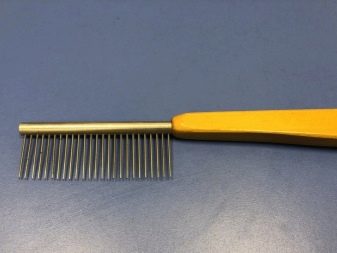
Features
Dog hair consists of two parts - wool and undercoat. The hair forms the appearance of the dog, protects the dog from aggressive environmental factors: sunlight, wind, some moisture and light mechanical stress, and the undercoat helps dogs to keep their body warm in cold climates.
Thus, dogs have two components of their cover, the proportions of the ratios of these covers vary from breed to breed, which allows some dogs to transfer winter nights in an open field, while others severely limits their capabilities and makes them tremble even in a light autumn wind. Dogs have their own hair care features. They are often neat animals; they cannot cope with tangled villi or formed tangles on their own.
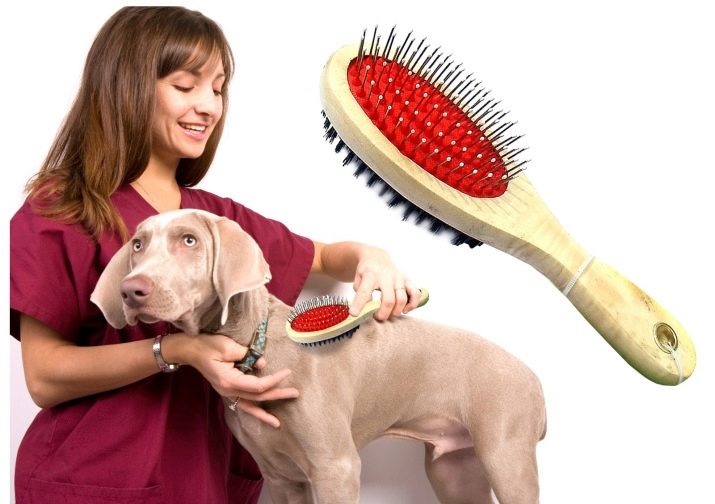
Wool should be washed with a certain frequency, cleaned of impurities that appeared during walks or games, and sometimes cut depending on the breed.
It is recommended to comb your pet's cover quite often with a comb or other devices, comb out the outgoing undercoat and remove parasites from the coat. The frequency of such procedures is dictated by the type of breed your dog belongs to - long-haired, short-haired or smooth-haired.
The easiest way is to comb the smooth-haired dogs. Their undercoat is practically not expressed, and the woolen hair is so short that tangling is practically impossible. Shorthair dogs already have some undercoat, and the coat itself may become confused if, for example, contaminants are present.
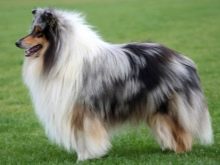
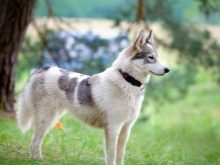
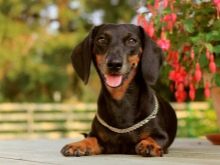
And, finally, long-haired dogs can have an extremely pronounced undercoat, as well as long hair, which can not only get confused, but also get tangled up in the absence of proper care.
Types and materials
To comb out your furry pet, you can use a variety of tools.
But at the same time, you need to know that all the tools are divided according to the function - for combing the hair, removing fleas, grooming the dog, grooming and trimming.

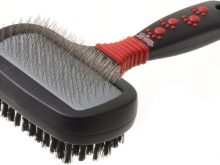
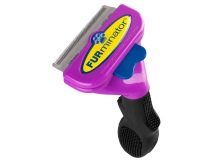
For combing wool, several varieties are used.
- Furminator. This tool is similar to a men's safety razor, only slightly larger and instead of a blade has a number of strong metal teeth. This tool, in addition to ease of use and reliability, can also offer pet comfort - dogs like the combing procedure in this way. The main task of the furminator is to remove the old undercoat, so this tool is not applicable to those dogs that do not have one. Depending on the length of the hair of the pet, it is worth choosing a furminator with more or less long teeth, and it is also necessary to take into account the size of the animal when choosing.
The presenter also needs some care, for example, it must be thoroughly washed after each procedure, and if the device is clogged, it can simply be cleaned with your own hands, without using any other tools.
This option has several advantages, but still has a very significant drawback - this is a rather high cost, because of which not everyone will be able to use the device.
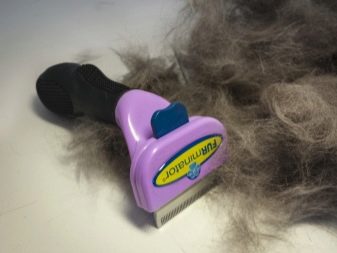
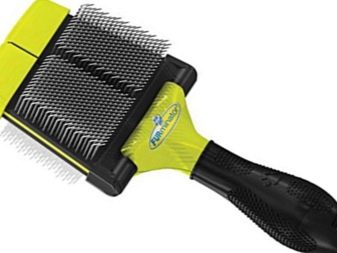
- Slicker. This dog grooming item is a kind of analogue to the furminator, but less perfect and universal for combing downy undercoat. The slicker has very long metal teeth and is suitable only for dogs with a very pronounced undercoat, and for shorthair animals, the combing process will cause discomfort. When choosing a slicker, it is necessary to correlate the dimensions of the dog, the severity of the hairline and the length of the teeth. It is also important that the ends of these teeth have balls made of plastic, rubber or metal, which will help prevent scratching the body of the animal.
One cannot fail to note the undeniable advantage in the form of cost, which is quite low, making this subject of hair care accessible to almost everyone.
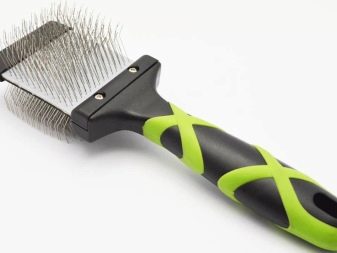

- Crest It is necessary to complete combing after a curling coat and to smooth down the hair of dogs of such breeds as Samoyeds, Husky, Spitz and other representatives with thick downy hair. The fact is that after the slicker, a certain amount of uncoated undercoat remains, albeit a small amount, but it can form into tangles and complicate the combing of the dog in the future, this is due to the use of the comb. In general, he can eliminate not only the remnants of the separated undercoat, but also these same witches.
Moreover, the comb is preferable to take bilateral, with different lengths of teeth on different sides, so that they can comb and undercoat, and wool. Like a slicker, this item has a low price.
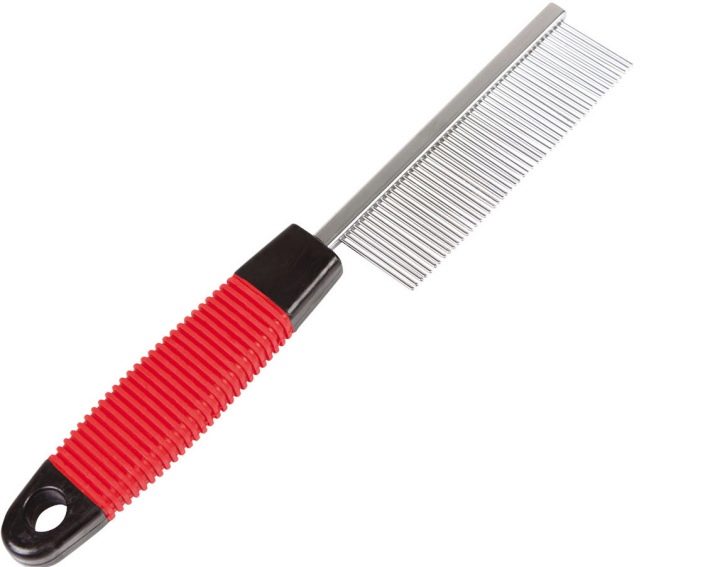
- Massage brush. Varieties of this object in design come with a handle and with a fastening in the form of a strap for the wrist, and the bristles in the brush can be either natural or artificial. If the artificial bristles are not made of plastic, but of metal, then it is desirable that the ends of the teeth are safe for the skin of the animal.The main function of the massage brush is not so much to comb out the dog’s hair, but to style it and give it a well-groomed appearance with a parallel massage of the skin.
Do not use a massage brush for long-haired dogs, as this item is unlikely to cope with their thick undercoat.
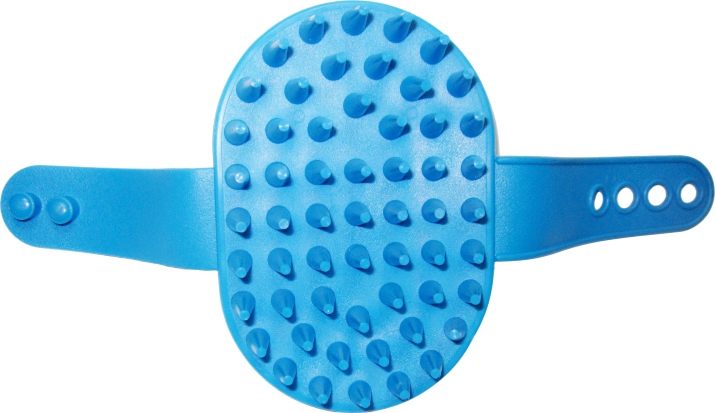
- Mitten. This tool is just a mitt, on which from the side of the inner surface there are rubber teeth similar to those on a massage brush, only shorter. It should be used for smooth-haired and short-haired doggies, since mittens have difficulty processing long-haired wool. The use does not seem difficult, since it is simple enough to stroke the dog in the direction of hair growth, and the dogs themselves are more than supportive of such a procedure, which allows them to be done daily and for mutual pleasure.
Mitten does not injure the dog, does not damage the hair and skin. It has a variety - a glove, with a similar principle of action, but due to the greater mobility of the fingers and their precise coordination, it is suitable for treating hard-to-reach spots on the skin of a pet’s wool coat.
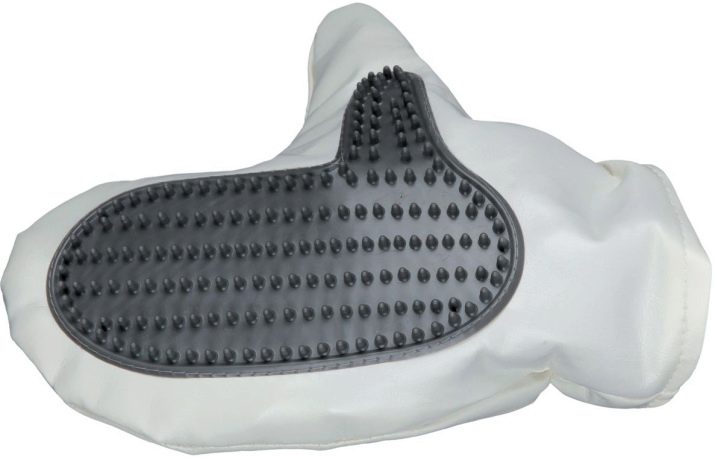
- Rake - This is not the tool that is used in gardening. In this case, we are talking about an object in which the teeth are not fixed firmly, but loosely, and make rotational movements, which positively affects the efficiency of combing down hair. It is undesirable to use this variety for combing dog breeds that do not have undercoat, since the hair can be wound on them, which will cause discomfort to the animal. Therefore, the use of a rake with rotating teeth is most suitable for scratching malamutes, Caucasian shepherds and other breeds with a dense undercoat.
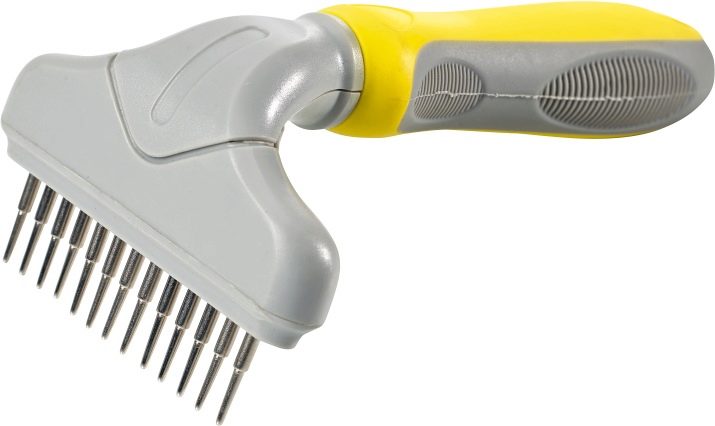
- To remove fleas, the main tool is a comb with very frequent teeth, between which there are so small gaps that fleas are easily removed from the wool mechanically. Again, the scallop should be proportional to the hairline of the dog, since a small scallop will not help to process the coat of a large dog, and a large one will injure a small one. You should not use such a scaffold on a regular basis, since it damages the entire undercoat - both already detached and alive.

- For haircuts use combs, hand and electric comb-trimmersthat are inherently close to clippers. A hand comb is used to separate the hair into strands, as well as to trim the edges when cutting, which is very convenient for dogs of the so-called "hairdressing breeds", for example, Yorkshire terriers, which have very good thin, elegant hairstyles.
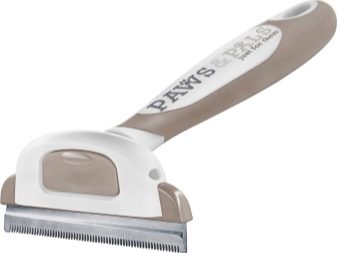
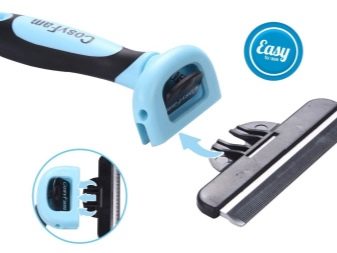
- Metal comb not a major haircut tool. She goes strictly paired with scissors or a typewriter. She does not comb the wool, only helps to separate the strands, allowing them to trim. If the dog has an undercoat, the tooth should go more often, if not, then less often, so as not to damage the outer hair.
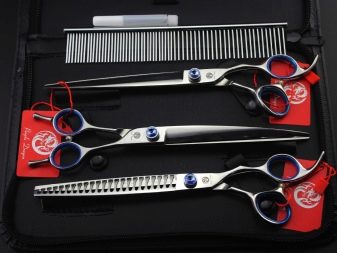
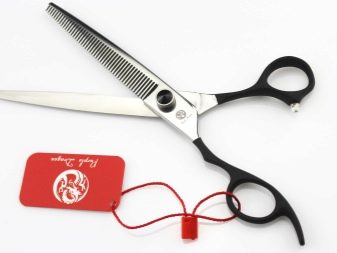
- Trimmers very similar to dog clippers. They are divided into such varieties as pendulum, battery, rotor and vibration. Rotary dogs are used in grooming dogs with very thick hair, and cordless - for grooming all other breeds. The rest are either difficult to use or provide insufficient power. Each such comb is equipped with interchangeable nozzles for different hair lengths and abundance of hair. Trimmers are good for those animals that often need to be cut. They are ideal for those owners who themselves want to monitor the appearance of their pet, as they are easy to use and do not require special skills, although you still have to get the hang of it.
There is an interesting option, which includes a combination of trimmer and slicker, that is, you can first remove the extra undercoat from the dog with one nozzle, then change the nozzle and cut it.
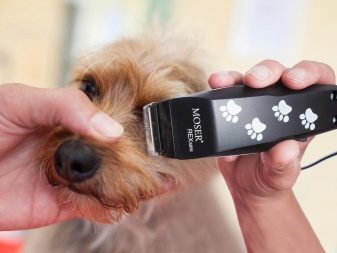
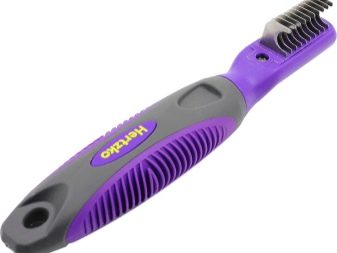
- You can use stripping to trim which is a series of blades mounted on a crossbar perpendicular to the handle. Drop hair is removed from them, moreover, mainly from schnauzers and other representatives of wire-haired breeds. Stripping can only be combined with trimming, as frequent stripping can damage the dog’s live coat and cause injury.
It is very important to know that when using this item it is necessary to pull off the dog's coat so as not to injure the pet.
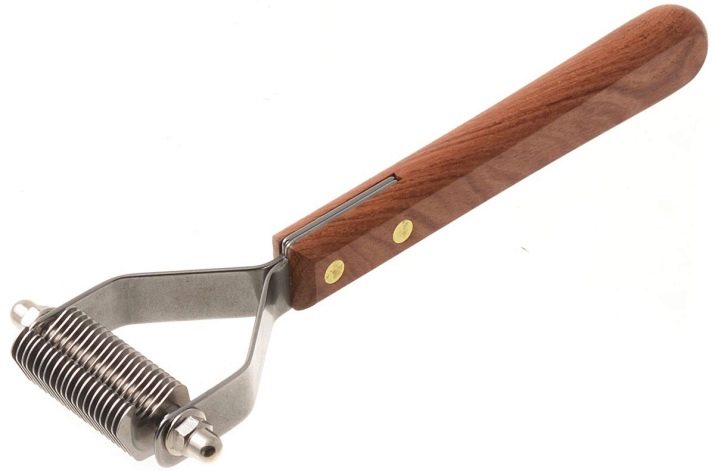
- For grooming use combs, which are similar to a comb with a very narrow handle - part with teeth can be combed through the hair, and strands can be wound around the handle or parted. They also use a groomer, a special tool similar to stripping. This tool is great for cutting off felted wool and thinning out the undercoat.
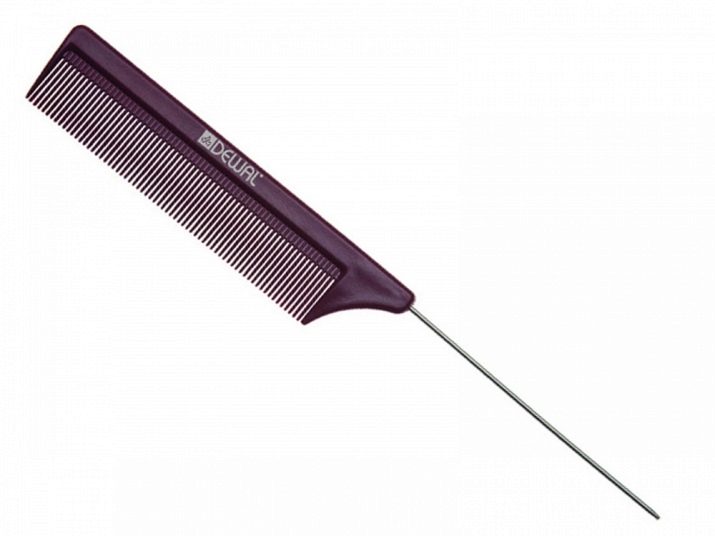
- Another grooming tool is koltunorez, similar to a groomer, but having long blades directed perpendicular to the plane of the handle. The tool is very sharp, so it is advisable not to use it without experience with it. And certainly it is not recommended to use it for regular processing of wool.
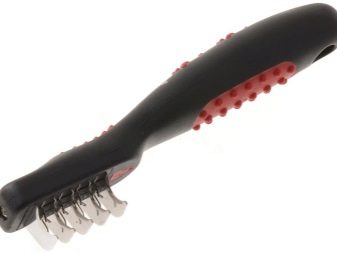
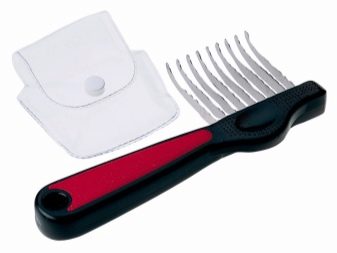
Criterias of choice
When choosing a tool for combing your pet, you need to be guided by some rules.
- First of all, do not save. It is very important to buy a quality item that does not damage the skin and hair of the animal. Buying a good tool, you provide reliability, comfort and safety for the pet, as well as convenience for yourself.
- For dogs with long hair, it is important to select tools of proportional length, with longer teeth. For large long-haired breeds, the presence of a massive layer of undercoat is more characteristic, therefore it is important for them to choose the right tools for caring for it. Shorthair and smooth-haired dogs do not have such an acute problem with the care of the undercoat, so you can do with just one thing.
- And also pay attention to the experience of other dog breeders. Perhaps you can be helped by breeders who regularly participate with pets in exhibitions, because appearance is important there, so experienced dog breeders definitely know how to care for their hair and what equipment to use.

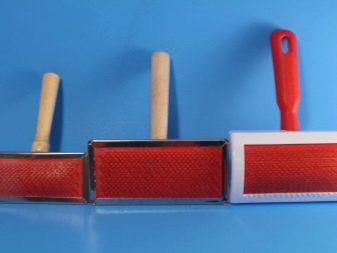
Usage Tips
It is very important to use the tools correctly so as not to injure the pet. In the process of processing wool, the following conditions must be met:
- when using tools with a sharp surface and cutting teeth, it is necessary to securely fix the dog so that it does not hurt with awkward movements;
- combing the animal is necessary in the direction of growth of the coat, as the comb in the other direction will bring great discomfort to your pet;
- many groomers and breeders recommend combing wet or slightly moistened hair, which is considered a safer and simpler process;
- when combing tangled places, you should not make sudden movements, it is necessary to smoothly comb off tangled wool, gently holding it with your palm;
- especially carefully comb the hair in the area of the paws, because there the cover is less plentiful and practically has no undercoat.
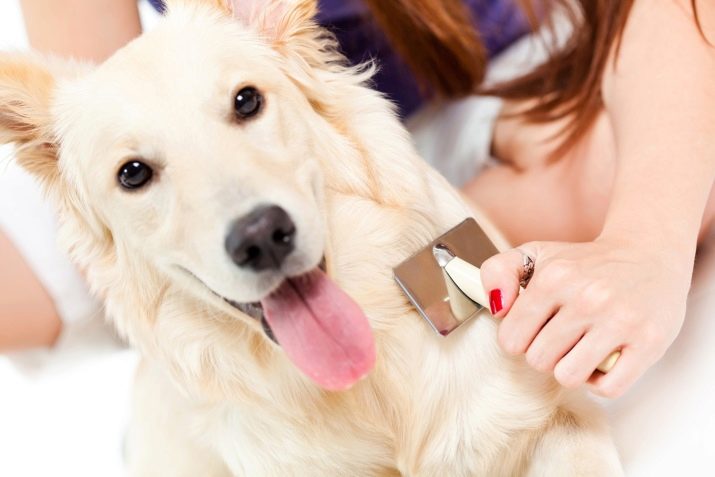
See how to choose a comb for dogs.








































